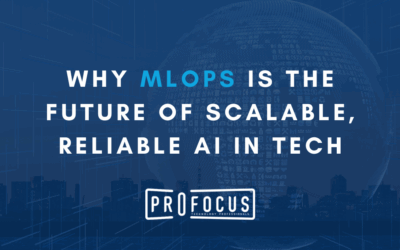2025 Planning Best Practices
As technology leaders look ahead to 2025, planning involves more than setting budgets or defining projects. It requires aligning tech priorities with business goals, navigating budget constraints, leveraging emerging technologies, and strategically managing talent. In a recent roundtable discussion, tech leaders from various sectors shared their best practices and insights for tackling these challenges.
1. Starting Early and Aligning with Broader Goals
One leader described beginning their 2025 planning process as early as July, ensuring all priorities align with organizational goals and OKRs (Objectives and Key Results). Every initiative must complement existing efforts and make efficient use of shared resources. They emphasized an exhaustive process involving company-wide alignment, frequent evaluations, and white paper reviews, reinforcing that tech priorities must drive innovation while also synchronizing with the company’s long-term objectives.
However, there are challenges. Planning for alignment across multiple leadership layers can hinder agility, slowing the organization’s ability to respond to changing needs. In this context, the tech leader’s focus is on long-term goals while trusting their teams to manage the immediate priorities.
2. Adjusting Traditional Planning for Rapidly Changing Tech
Another leader, with experience in industries such as retail and tech, highlighted the unique hurdles in tech planning. In a previous corporate role, they engaged in five-year project planning with fixed budgets—a difficult feat in tech where innovations rapidly shift the landscape. With AI development in particular, it’s challenging to predict the specific impact and ensure budgets reflect actual needs rather than generalized trends.
The tech industry often demands flexibility, especially in AI investments. Leaders noted that AI, while powerful, should be aligned with real, specific business problems rather than simply following the latest trends. They emphasized an exploratory approach to AI budgeting, with a focus on making solid business cases to justify the investment.
3. Aligning AI with Business Needs
A major topic in the discussion was the role of AI in 2025 planning, especially the importance of clear problem definition. Many in the group agreed that AI can be “a solution in search of a problem.” As one participant put it, every AI investment should be driven by an identified business need, not just the excitement around new technology.
Leaders shared real-world examples, including a pilot program using computer vision technology to improve inventory accuracy in retail stores. This pilot was based on specific objectives: increase sales, reduce labor costs, and improve customer satisfaction. In this example, AI wasn’t an end in itself but a means to drive efficiency and operational success, highlighting the importance of a strong business case for any AI initiative.
4. Creative Budget Solutions Amid Constraints
Budget constraints are a common hurdle, particularly for tech teams in more structured environments like government-adjacent organizations. One leader shared how, despite restricted budgets and headcount limits, their team’s fiscal year planning requires detailed capital and operating budgets, emphasizing governance to ensure strategic focus. This discipline is especially critical as they prepare for a large ERP system replacement, which requires careful resource allocation and long-term planning.
In cybersecurity, budget limitations increase the need to communicate risks effectively to leadership. Leaders suggested a shift in storytelling from technical jargon to business impact, illustrating potential costs of risk and delayed investments in security. One executive likened technical debt to minimum payments on a credit card, where failing to address it compounds risk over time. This analogy proved powerful in conveying the need for a proactive budget approach.
5. Allocating IT Costs Directly to Business Units
An innovative cost-allocation model emerged in the discussion: pushing IT costs into business units’ budgets. This approach allows each department to view IT as an investment tied to its operations rather than as a centralized cost. Under this model, IT becomes an enabler across the organization rather than just a cost center, fostering a shared sense of ownership for tech investments.
One leader reflected on this concept as a fresh perspective. Traditionally, IT is often seen as a cost center, while other departments focus on revenue. Allocating IT costs at the department level enables business units to see the value in tech initiatives, encouraging a culture where each area feels invested in IT’s role in achieving their goals.
6. Using OKRs for Goal Alignment and Communication
OKRs were also highlighted as a powerful planning tool, helping tech teams link objectives directly to company goals. One participant shared that their team’s goals cascade from the top down, creating alignment across levels while allowing flexibility in how the objectives are achieved. The motto, “The plan may change, but the goal doesn’t,” emphasizes this approach, where execution can adapt to circumstances as long as the end goal is achieved.
Effective communication was another key point, particularly in translating technical objectives into accessible language for non-technical stakeholders. Resources like Measure What Matters by John Doerr were recommended, but leaders agreed that OKR frameworks should be adapted to each organization’s needs.
7. Talent Retention and Embracing Career Growth
Talent retention was identified as a top priority, yet leaders recognized that it’s not always possible—or even desirable—to retain everyone. One leader shared their perspective on supporting employee growth even if it leads talent elsewhere: “If they outgrow you, let them go.” While organizations strive to retain top performers, they also understand the value of fostering an environment where employees can grow, whether they stay or move on. This view helps to balance the need for a stable, skilled workforce with the reality of inevitable turnover in a dynamic job market.
Conclusion: Planning for a Flexible and Focused 2025
The 2025 planning discussion underscored the importance of alignment, adaptability, and a clear business-driven focus. Leaders are preparing for a year that will demand both strategic foresight and operational agility, balancing innovative initiatives like AI with budget constraints, aligning IT costs with business units, and using OKRs to ensure each goal serves the broader company vision.
These insights serve as a reminder that effective planning is about more than forecasting growth. It’s about building resilient frameworks that adapt to change, embrace technology responsibly, and support the workforce. As tech leaders move into 2025, their challenge will be to maintain this balance between structured planning and the flexibility needed to stay responsive in an evolving tech landscape.




